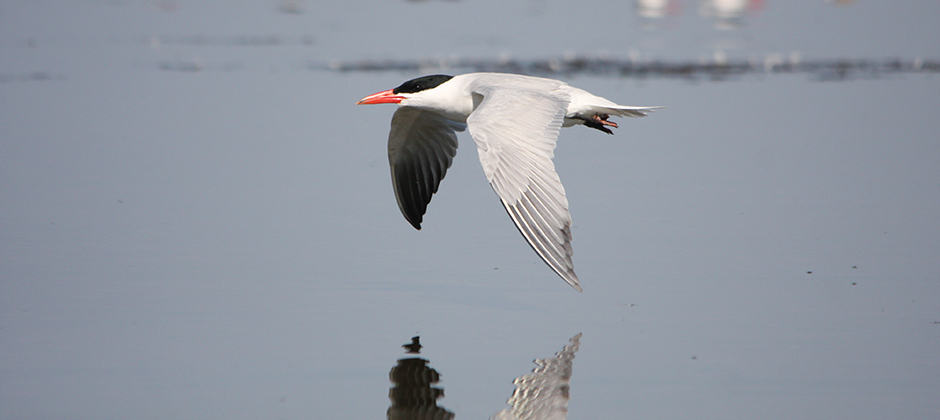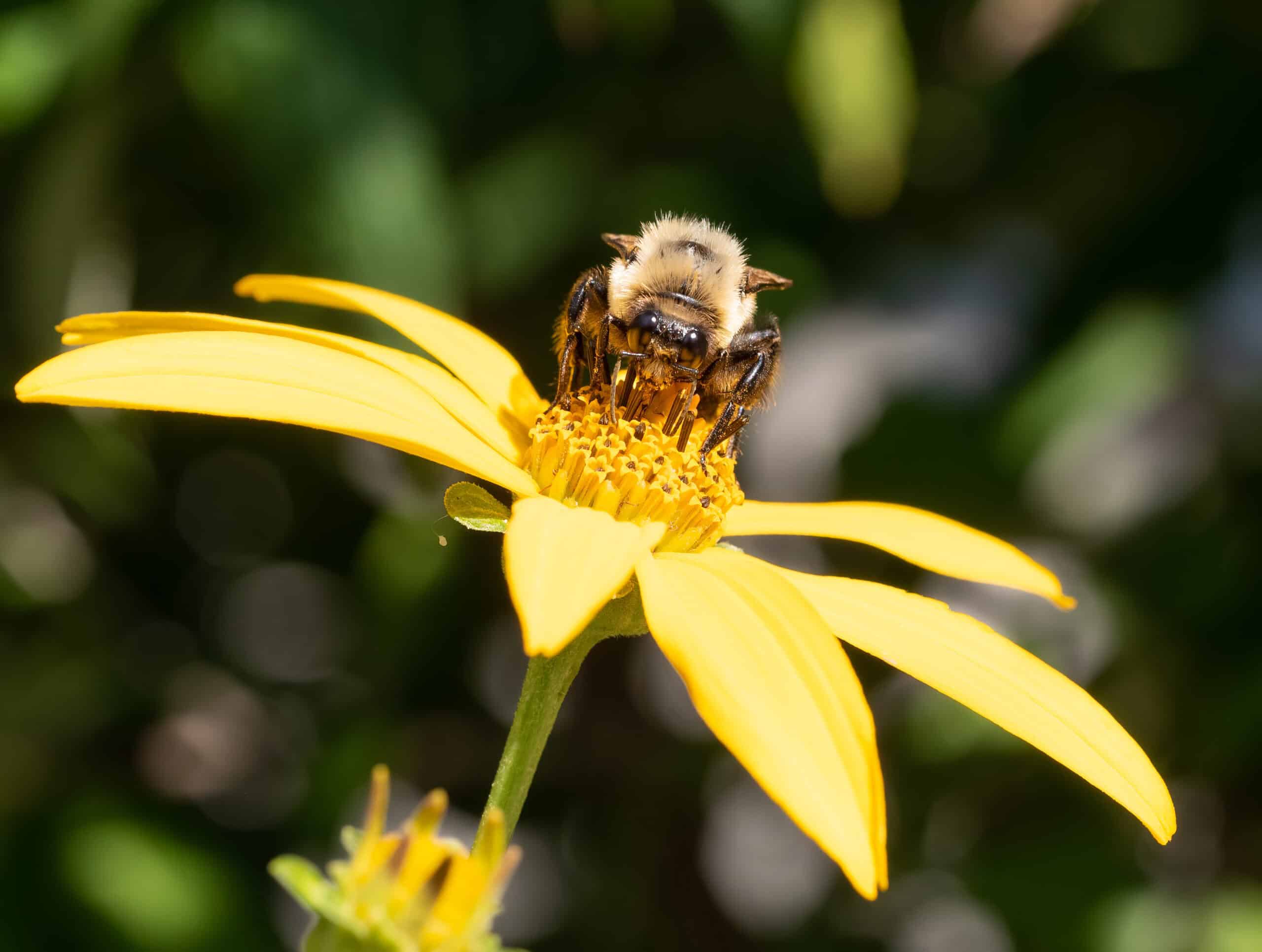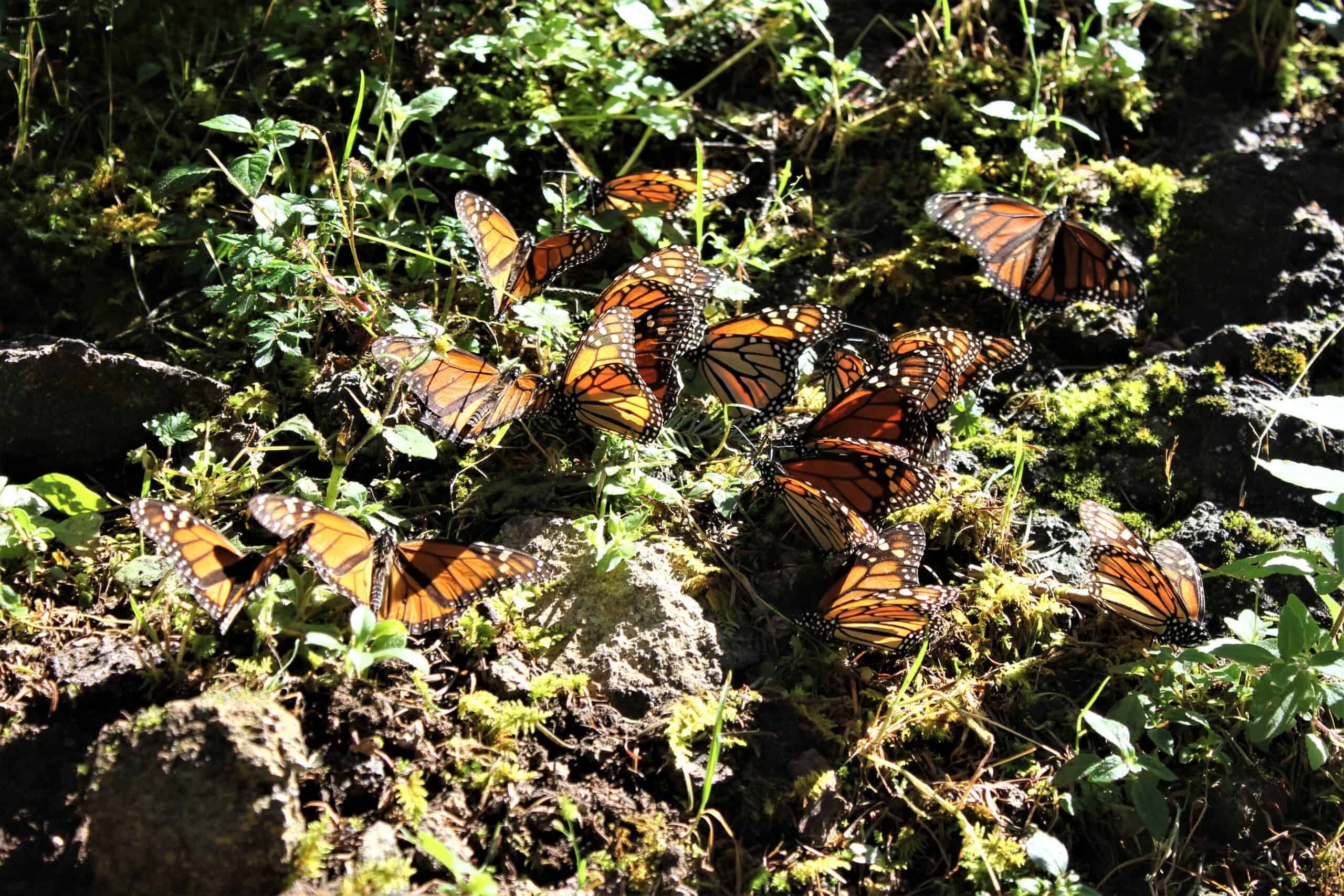Share this article
WSB: Caspian terns resist efforts to recover imperiled fish
Caspian terns with a taste for young salmon are resisting many of the management efforts put forth to protect imperiled salmon in the fishery.
The seabirds nest on small islands in the Columbia Basin, where young salmon pass on their way to the ocean after hatching upriver. Some of these salmonids are listed under the U.S. Endangered Species Act, mostly due to human causes like dam-building, overfishing and pollution. But as dams are removed and fishing is being stopped for some species, the Caspian terns’ (Hydroprogne caspia) appetite is among the things standing in the way of the listed species’ recovery.
“They’re hindering the restoration process,” said Ethan Schniedermeyer, who worked with the terns as part of his master’s degree at Oregon State University.
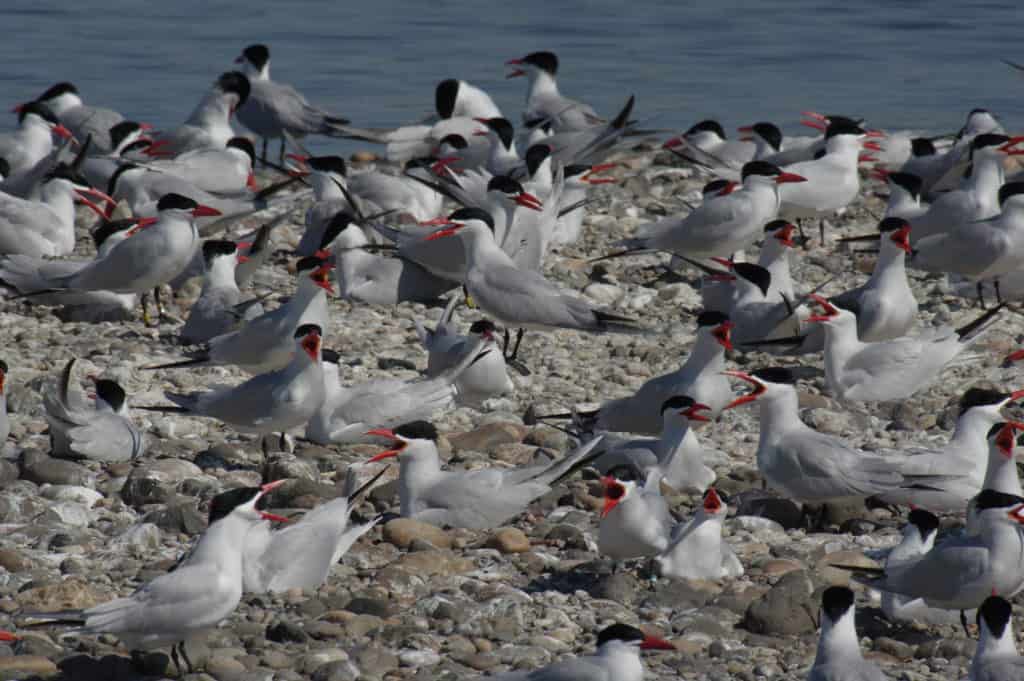
Wildlife managers tried to dissuade Caspian terns from making colonies like this on the Columbia River. Credit: Tim Lawes
Wildlife managers had tried to limit the terns’ predation on salmon by pressuring the birds to leave some of the islands they colonize in the Columbia Plateau of Oregon and Washington, while at the same time building other alternative nesting areas in northern California and Oregon.
The terns at one of the larger colonies in the Columbia Plateau had larger per capita consumption of salmon, Schniedermeyer said. Managers tried to keep them off two large colonies on islands used by more than 80% of the terns in the region by scaring away gulls, which nest earlier in the season and which they believed attracted the terns. They put up flagging, covered prime nesting areas with debris and allowed natural vegetation to build up. On two of the biggest colonies in the Columbia Plateau, they actively hazed gulls and terns that were harder to dissuade.
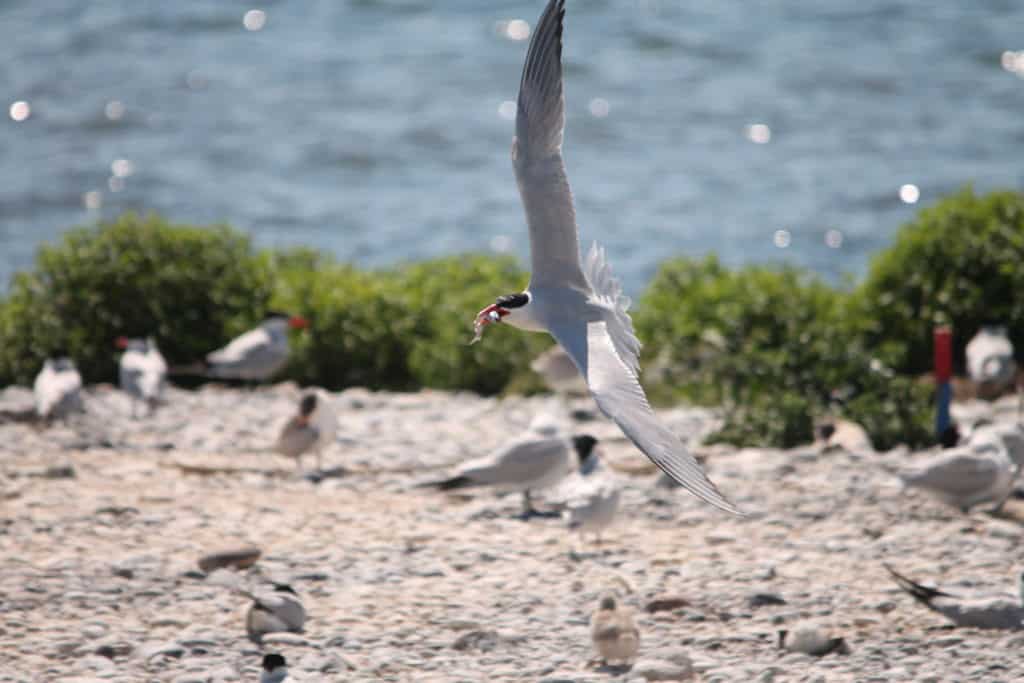
A Caspian tern with a salmonid on the Columbia River. Credit: Ethan Schniedermeyer
In a study published in the Wildlife Society Bulletin, Schniedermeyer and his co-authors set out to determine whether these efforts were effective. The researchers observed the response of Caspian terns from 2014 to 2016. Before the tern dissuasion project began, an estimated 877 pairs used the area during the nesting period. By 2016, it was down to 675 pairs. The effort had reduced the tern population, researchers found, but it fell far short of its goal of bringing the number of pairs down to 200.
Schniedermeyer and his team’s observations found that while many of the terns stayed off these two main islands, they ended up nesting on smaller islands nearby that they had used in previous years but in smaller numbers. They seemed to use their knowledge of the area to get around the obstacles created by wildlife managers, nesting on smaller gravel or sand bars.
“They are long-lived birds, and they’re familiar with the resources,” he said.
Terns migrate every year from Mexico, Southern California and Central America to various locations in the Pacific Flyway for nesting during the spring. Other research has shown they can cover large distances in a short period of time to find new nesting habitats. But the terns have proved equally resistant to efforts to attract them to nesting areas in California and to other alternative nesting locations. In a related project in California from 2015 to 2017, managers created tern nesting islands in the Don Edwards San Francisco Bay National Wildlife Refuge, and tried to attract terns using speakers playing tern noises and decoys. But they only noticed a handful of Caspian terns with bands from the Columbia River basin, according to research at that time.
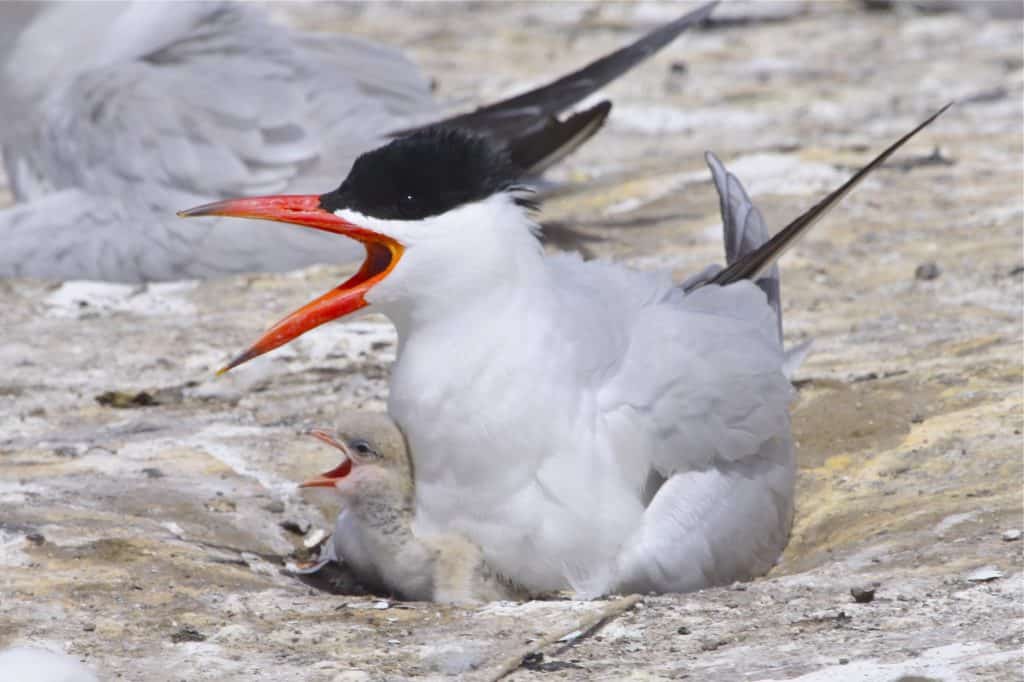
A Caspian tern with a chick in the Columbia Plateau. Credit: Daniel D. Roby
Another alternate nesting area is in southern Oregon, but that region experienced a drought during the study period, which Schniedermeyer said may have hindered the wildlife management effort.
In the Columbia Plateau, some of these new nests the birds formed on smaller islands or sand bars ultimately failed, since they weren’t big enough or otherwise suitable for nests, Schniedermeyer said. He speculated that it may take a couple of years of regular nest failures before the terns are persuaded to move to another region.
“You might have to have a long-term outlook to reach your management goals,” he said. But this research was part of larger efforts to non-lethally reduce predation by terns of juvenile salmon—efforts that are ongoing.
“After this study was complete, reports during subsequent breeding seasons showed that terns were continued to return to breed in smaller numbers,” Schniedermeyer said.
This article features research that was published in a TWS peer-reviewed journal. Individual online access to all TWS journal articles is a benefit of membership. Join TWS now to read the latest in wildlife research.
Header Image: A Caspian tern flies near the Blalock Islands on the Columbia river. Credit: Ethan Schniedermeyer



